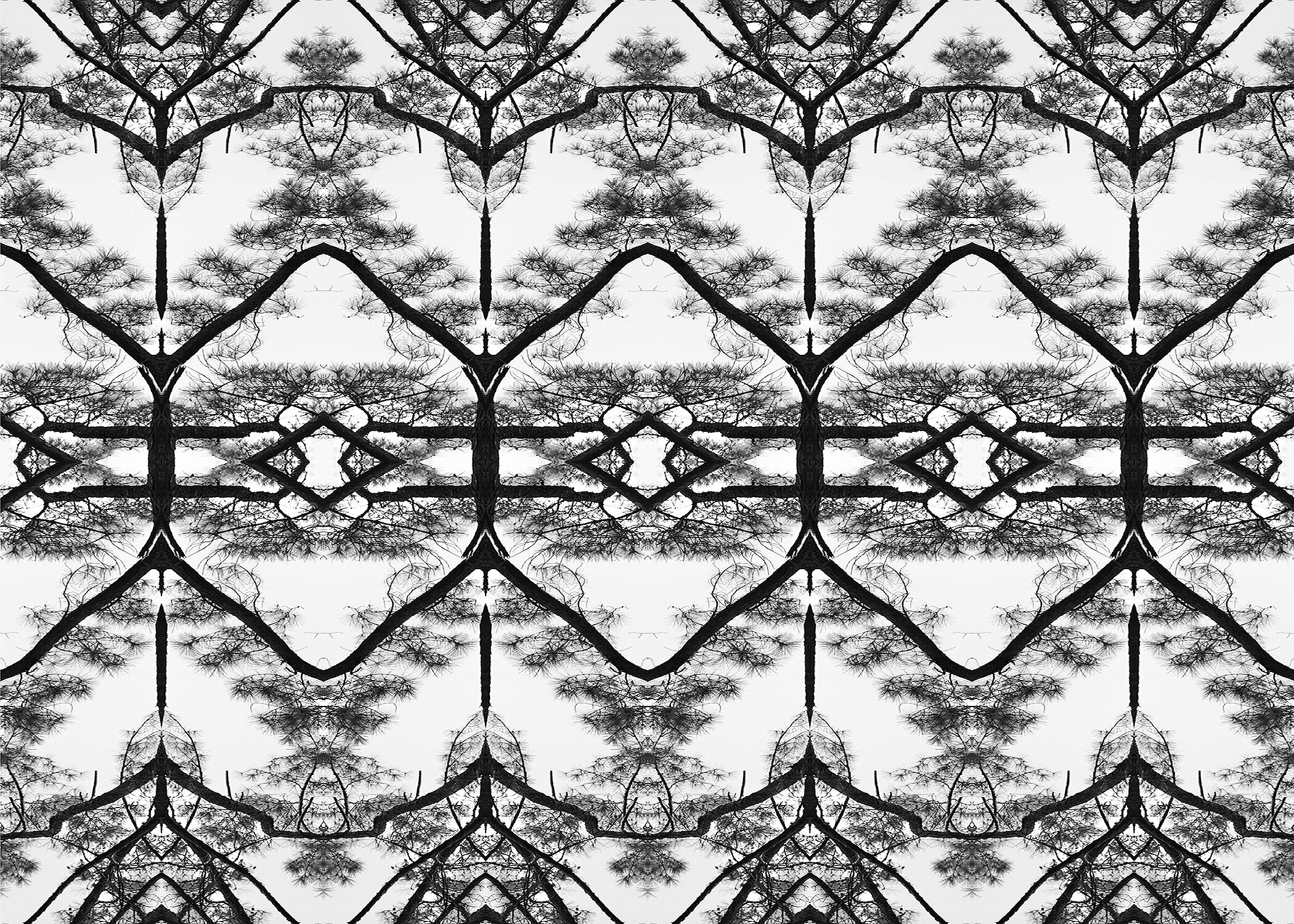In Patterns in Trees, the viewer is immersed in the minute details that exist within trees and the patterns that can be created from them. Some patterns appear dense and bold, while others appear more delicate and fragile.
During the winter months, trees are at their most vulnerable, dormant, with less light and water. Like me, their limbs are symmetric, yet thin, and twisted and tangled with genetic imperfections. Their limbs easily crack and pop. They sway from the slightest bit of the earth’s wind, and the dead leaves ache from lack of color. However, their trunks stand mighty in spite of great despair. Even when they are diseased, damaged, or broken, like me they seem to withstand the greatest obstacles.
In search of their symmetrical nature and connection to me, I accentuated some parts of the trees while minimizing others to reflect revealing the details that I want to highlight and minimizing what I want to hide. For as long as I can remember, I have struggled with my identity as someone with an invisible, yet physical neuromuscular disease. While appearing “normal” has its benefits, it would be nice to have my obstacles more visible and my symptoms more treatable.
Maybe the work reflects what we all need – to have others see our stronger, more beautiful details, to conceal details too private or painful to share, and in doing so, achieve some sort of balance and order that brings us calm and peace.




















